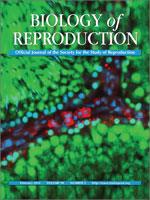Ureaplasmas are the microorganisms most frequently isolated from the amniotic fluid of pregnant women and can cause chronic intrauterine infections. These tiny bacteria are thought to undergo rapid evolution and exhibit a hypermutatable phenotype; however, little is known about how ureaplasmas respond to selective pressures in utero. Using an ovine model of chronic intraamniotic infection, we investigated if exposure of ureaplasmas to subinhibitory concentrations of erythromycin could induce phenotypic or genetic indicators of macrolide resistance. At 55 days gestation, 12 pregnant ewes received an intraamniotic injection of a nonclonal, clinical Ureaplasma parvum strain followed by (i) erythromycin treatment (intramuscularly, 30 mg/kg/day, n = 6) or (ii) saline (intramuscularly, n = 6) at 100 days gestation. Fetuses were then delivered surgically at 125 days gestation. Despite injecting the same inoculum into all the ewes, significant differences between amniotic fluid and chorioamnion ureaplasmas were detected following chronic intraamniotic infection. Numerous polymorphisms were observed in domain V of the 23S rRNA gene of ureaplasmas isolated from the chorioamnion (but not the amniotic fluid), resulting in a mosaiclike sequence. Chorioamnion isolates also harbored the macrolide resistance genes erm(B) and msr(D) and were associated with variable roxithromycin minimum inhibitory concentrations. Remarkably, this variability occurred independently of exposure of ureaplasmas to erythromycin, suggesting that low-level erythromycin exposure does not induce ureaplasmal macrolide resistance in utero. Rather, the significant differences observed between amniotic fluid and chorioamnion ureaplasmas suggest that different anatomical sites may select for ureaplasma subtypes within nonclonal, clinical strains. This may have implications for the treatment of intrauterine ureaplasma infections.
How to translate text using browser tools
11 December 2013
Ureaplasma parvum Undergoes Selection In Utero Resulting in Genetically Diverse Isolates Colonizing the Chorioamnion of Fetal Sheep
Samantha J. Dando,
Ilias Nitsos,
Graeme R. Polglase,
John P. Newnham,
Alan H. Jobe,
Christine L. Knox
ACCESS THE FULL ARTICLE

Biology of Reproduction
Vol. 90 • No. 2
February 2014
Vol. 90 • No. 2
February 2014
amniotic fluid
chorioamnion
minimum inhibitory concentration
ovine model
ribosomal RNA
ureaplasma




